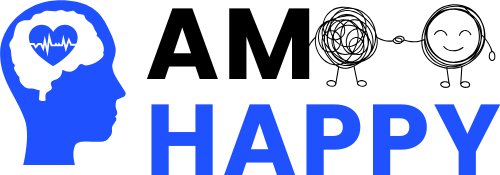(Image credit: Brian McGowan, Unsplash)
As we head into 2024, more people are becoming aware of the negative impacts that come from regularly consuming bad news, a habit known as “doomscrolling.” This behavior is often driven by the attention-grabbing nature of media and continuous news alerts, which can have detrimental effects on both mental and physical health.
Discussions among mental health professionals have highlighted a concerning connection between doomscrolling and the rise in Substance-Induced Anxiety Disorder (SIAD) as well as panic attacks. As someone who focuses on mental health topics, I felt it necessary to explore this relationship and share some helpful strategies to safeguard your well-being in a world that often feels chaotic.
Understanding Doomscrolling
Doomscrolling refers to the habit of consuming negative news on a regular basis. Individuals engaged in this cycle feel a compulsion to stay updated on disasters, political turmoil, environmental issues, and other unsettling stories, which leads to prolonged exposure to distressing media. Additionally, some may find themselves mindlessly watching endless short videos, losing track of time.
While it’s important to stay informed, constantly focusing on negative content can be harmful to your mental well-being.
Mental Health Impact of Doomscrolling
Our brains are wired to respond to threats with a fight-or-flight response, an instinct crucial for survival throughout human history.
However, persistent exposure to non-physical threats like alarming news can elevate stress levels, leading to chronic anxiety. Over time, this continuous state of alertness can contribute to anxiety disorders and episodes of panic.
But why do we feel drawn to distressing news? Engaging in doomscrolling can activate dopamine receptors that temporarily relieve anxiety, although this relief is short-lived and can lead to worsened mood over time.
Worse still, people often turn back to doomscrolling as a way to cope with their stress, creating a vicious cycle of negative emotions.
Connection to Substance-Induced Anxiety Disorder
Substance-Induced Anxiety Disorder (SIAD) arises when anxiety or panic symptoms are triggered by the use, withdrawal, or exposure to certain substances. Common offenders include caffeine, alcohol, nicotine, and various prescription medications.
Individuals who frequently doomscroll may seek relief through substances like alcohol or prescription drugs to cope with anxiety and stress instigated by the news cycle. This can create an ongoing cycle where substance use provides temporary alleviation but ultimately exacerbates anxiety symptoms, possibly leading to SIAD.
Real-World Consequences: Panic Attacks
Panic attacks are intense episodes of fear that can manifest through symptoms such as heart palpitations, sweating, and trembling. Victims often experience overwhelming dread and a fear of losing control.
For those subjected to constant negative news, the likelihood of experiencing panic attacks may increase. Additionally, substances taken to manage stress can lower resilience to these attacks, making them more frequent and severe.

(Image credit: Mark Adriane, Unsplash)
Effective Strategies to Overcome Doomscrolling
To escape the doomscrolling trap, it takes commitment and specific tactics. Here are some effective approaches you can try;
1. Set Clear Time Limits
Designate specific times during the day to catch up on the news and stick to these schedules. Using apps that limit your access to news websites or social media can help maintain this routine.
2. Curate Your Social Media Feeds
Take charge of your social media experience by including positive content. Follow accounts that focus on fulfilling stories or your local media, creating a more balanced experience amidst the negative news cycle.
3. Adopt Healthy Coping Strategies
Consider exercising or engaging in activities that promote well-being, such as yoga or jogging. Mindfulness practices like meditation or deep breathing can also help, as can creative outlets like writing or art.
4. Seek Professional Help if Needed
If anxiety or panic feelings become too intense, don’t hesitate to reach out for help. A mental health professional can provide tailored coping strategies since everyone reacts differently to anxiety triggers.
5. Maintain Social Connections
Even as someone who writes about mental health, I recognize the need to improve in this area. Having strong relationships with friends and family can alleviate stress and anxiety. Regular communication can shift our attention away from the flood of negative news.
Ultimately, it’s crucial to find a balance in how we consume news while remaining informed. Being mindful of the signs of distressing content and actively working to lessen its effects can help prevent more severe anxiety disorders and panic attacks. The world is constantly changing, and mental health is paramount; by being intentional and adopting healthy habits, we can protect our well-being during these tough times, regardless of our location.
By understanding how media consumption impacts our mental health, we can navigate the digital age without succumbing to its pitfalls. Don’t forget that it’s absolutely okay to disconnect for the sake of your mental health.



1 Comment
Thank you, I’ve recently been searching for info approximately this topic for a long time and yours is the greatest I have came upon till now. But, what about the conclusion? Are you certain in regards to the supply?